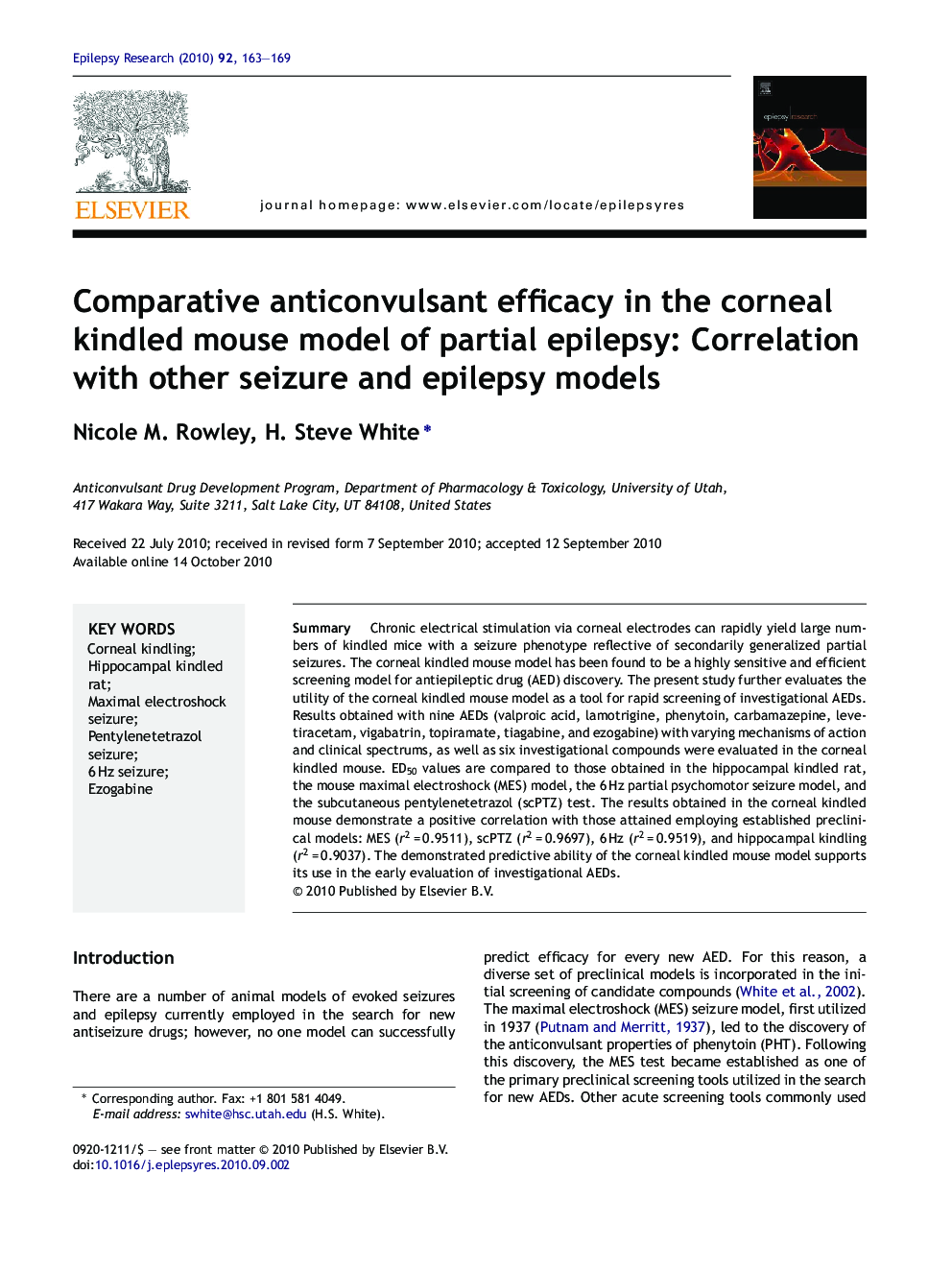| Article ID | Journal | Published Year | Pages | File Type |
|---|---|---|---|---|
| 3052497 | Epilepsy Research | 2010 | 7 Pages |
SummaryChronic electrical stimulation via corneal electrodes can rapidly yield large numbers of kindled mice with a seizure phenotype reflective of secondarily generalized partial seizures. The corneal kindled mouse model has been found to be a highly sensitive and efficient screening model for antiepileptic drug (AED) discovery. The present study further evaluates the utility of the corneal kindled mouse model as a tool for rapid screening of investigational AEDs. Results obtained with nine AEDs (valproic acid, lamotrigine, phenytoin, carbamazepine, levetiracetam, vigabatrin, topiramate, tiagabine, and ezogabine) with varying mechanisms of action and clinical spectrums, as well as six investigational compounds were evaluated in the corneal kindled mouse. ED50 values are compared to those obtained in the hippocampal kindled rat, the mouse maximal electroshock (MES) model, the 6 Hz partial psychomotor seizure model, and the subcutaneous pentylenetetrazol (scPTZ) test. The results obtained in the corneal kindled mouse demonstrate a positive correlation with those attained employing established preclinical models: MES (r2 = 0.9511), scPTZ (r2 = 0.9697), 6 Hz (r2 = 0.9519), and hippocampal kindling (r2 = 0.9037). The demonstrated predictive ability of the corneal kindled mouse model supports its use in the early evaluation of investigational AEDs.
